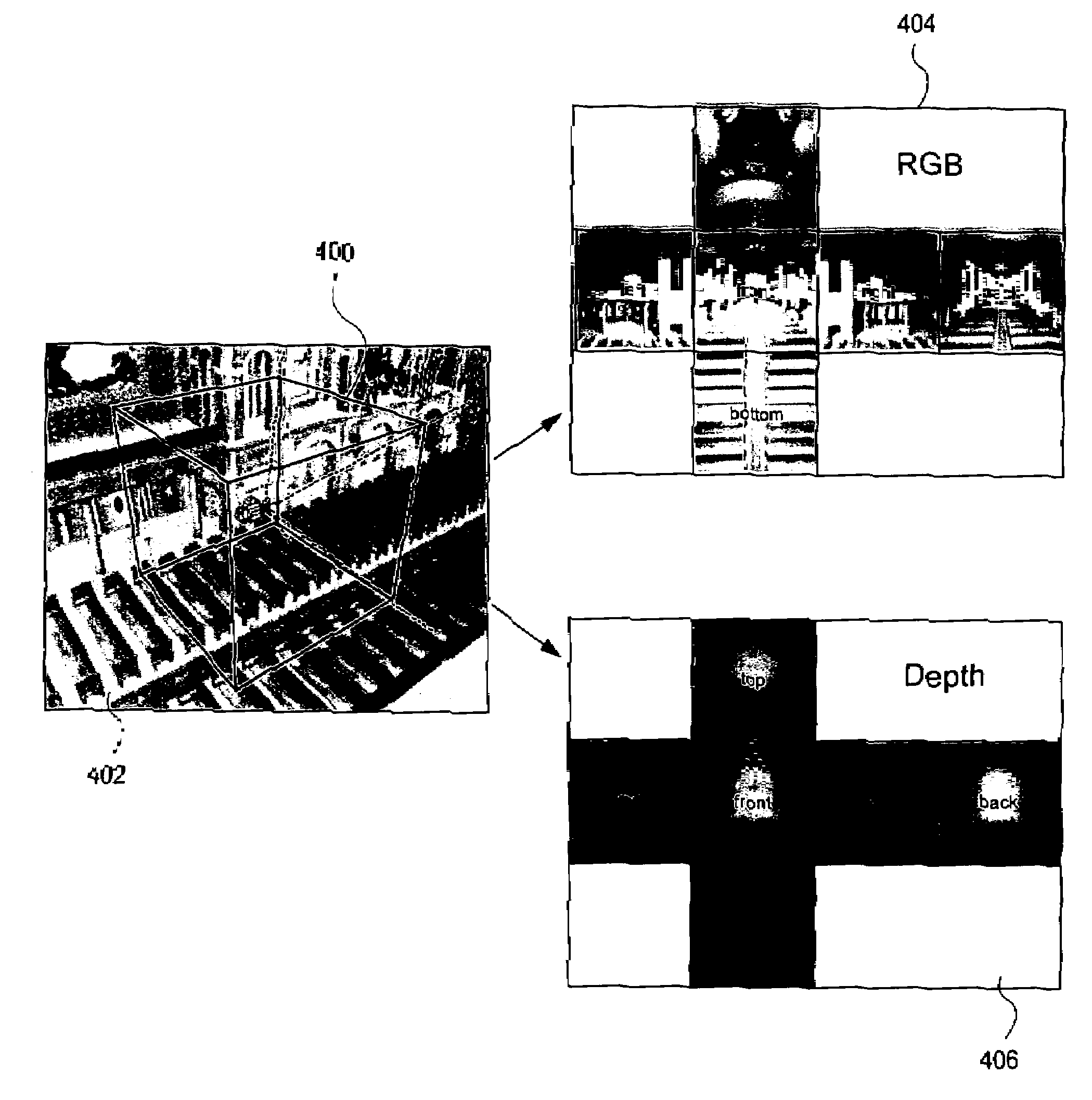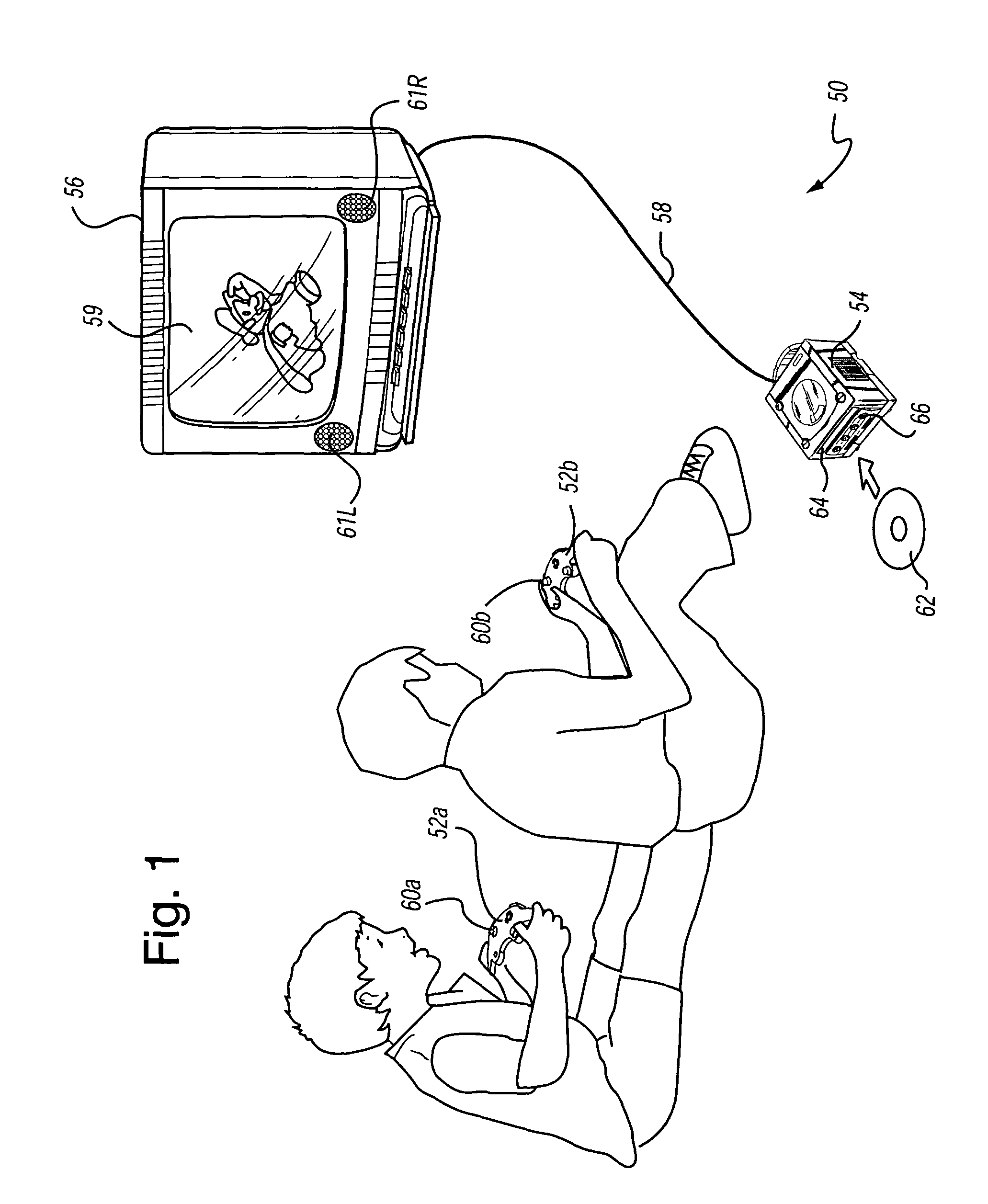Video game play using panoramically-composited depth-mapped cube mapping
a cube mapping and video game technology, applied in the field of video game play, can solve the problems of inability to render the game in the time available, the most advanced home video game system lacks the processing resources of video game designers, and the complexity of detailed images is exceedingly high on the processors and other internal circuitry of relatively inexpensive video game system processors
- Summary
- Abstract
- Description
- Claims
- Application Information
AI Technical Summary
Benefits of technology
Problems solved by technology
Method used
Image
Examples
example images
[0056]FIGS. 7A-7G show example images that are possible in the cathedral interior scene of FIG. 4A when an exemplary moving object 500 interacts with the cube-mapped scene. The moving object 500 shown in FIGS. 7A-7G is a cube for purposes of illustration only—any animated or non-animated object of any configuration could be used instead. FIG. 7A shows moving object 500 obstructing and being obstructed by different portions of the cube-mapped virtual 3D environment—in this case a railing 502 on the clere story of the virtual cathedral. FIG. 7B shows the same moving object 500 obstructing and being obstructed by a column 504 and also descending and thus being obstructed by portions of the tile floor surface 506 of the virtual cathedral. FIG. 7C shows the same cubic moving object 500 obstructing and being obstructed by ceiling details such as shown in FIG. 5D. FIG. 7D shows the moving object 500 obstructing and being obstructed by an archway detail 508. FIG. 7E shows moving object 500 ...
example enhancements
to Panoramic Compositing
[0058]Example Enhanced Antialiasing:
[0059]The quality of composited renderings could be improved with better antialiasing. This can be achieved by allowing multiple Z values and multiple color values for edge pixels of foreground objects.
[0060]We would get a lot of benefit even with just two Z values per pixel. This allows a high quality solution to the halo artifacts which occur when real-time CG characters are positioned between background and foreground pre-rendered elements in 1-depth-sample per pixel compositing.
[0061]The following algorithm can be used to render anti-aliased edges in the two depth samples per pixel case.
[0062]1. Render the furthest depth value and RGB value first.
[0063]2. Composite the real-time character as usual.
[0064]3. Alpha-blend on the foreground edges—alpha comes from foreground coverage value.
[0065]Note that foreground edges occupy only a small percentage of the pixels, so the antialiasing pass does not need to consume a full fr...
PUM
 Login to View More
Login to View More Abstract
Description
Claims
Application Information
 Login to View More
Login to View More - R&D
- Intellectual Property
- Life Sciences
- Materials
- Tech Scout
- Unparalleled Data Quality
- Higher Quality Content
- 60% Fewer Hallucinations
Browse by: Latest US Patents, China's latest patents, Technical Efficacy Thesaurus, Application Domain, Technology Topic, Popular Technical Reports.
© 2025 PatSnap. All rights reserved.Legal|Privacy policy|Modern Slavery Act Transparency Statement|Sitemap|About US| Contact US: help@patsnap.com



